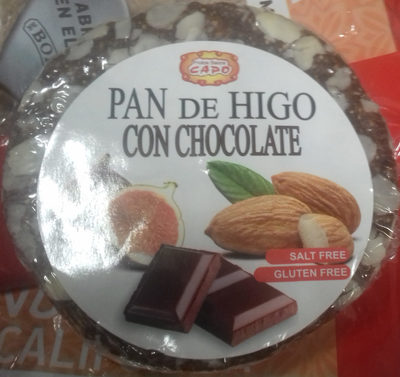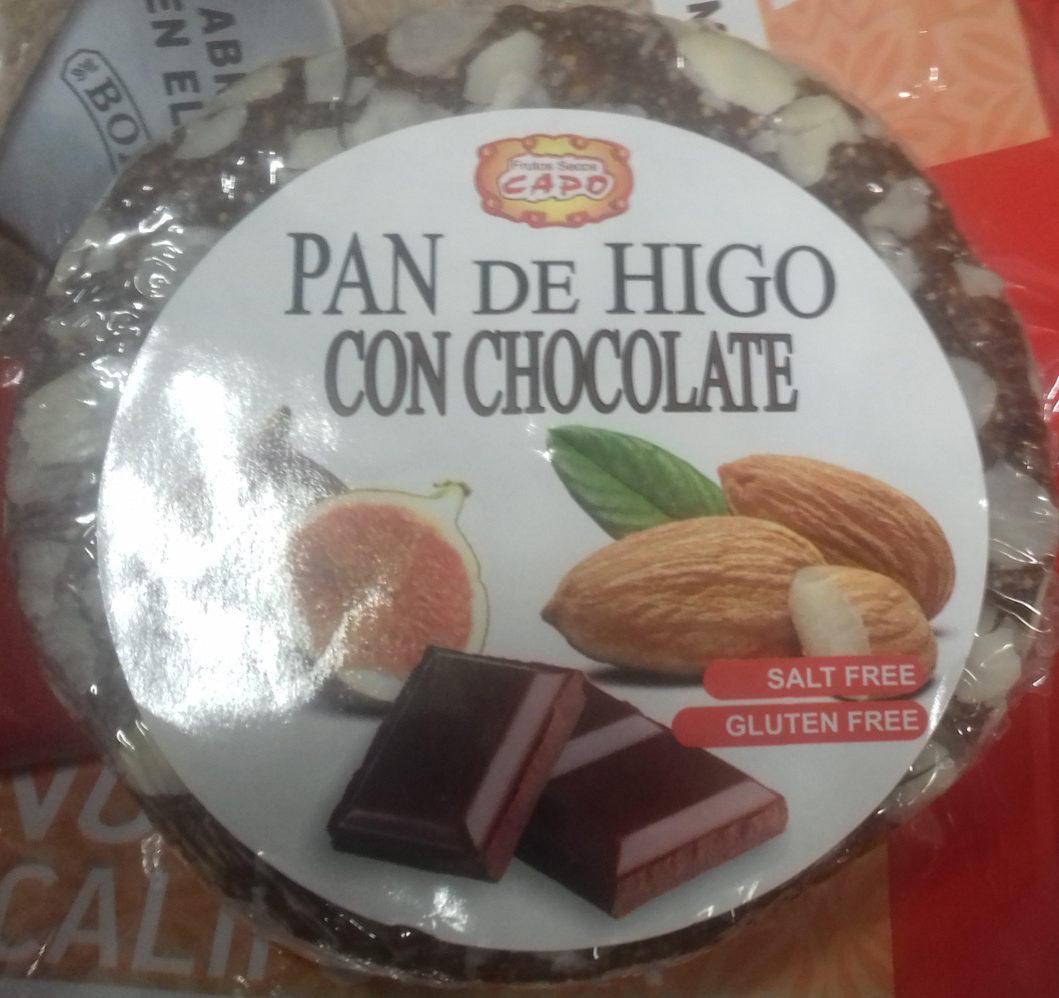Pan de higo con chocolate - Capo - 250 g
Aquesta pàgina del producte no està completa. Podeu ajudar a completar-la editant-la i afegint-hi més dades a partir de les fotos ja disponibles, o fent-ne més amb l'aplicació de androide o iPhone / iPad. Gràcies!
×
Codi de barres: 8413365031596 (EAN / EAN-13)
Nom comú: Pan de higo con chocolate
Quantitat: 250 g
Empaquetament: Plàstic
Marques: Capo
Categories: Aliments i begudes amb base vegetal, Aliments amb base vegetal, Snacks, Aperitius dolços, Llaminadures, Aliments festius, Aliments i begudes de Nadal, Productes secs, Dolços de Nadal, Aliments secs amb base vegetal, en:Dried fig cakes
Etiquetes, certificacions, premis: Baix o sense sal, Lliure de gluten, Sense sal afegida
Llocs de fabricació o processament: España
Botigues: Carrefour
Països on es va vendre: Espanya






